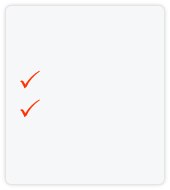
Globalshift.co.uk - copyright © 2009 to 2024; All rights reserved.
Data in this website may not be the most recent available Home | Terms of use
| Contact



WEST AFRICA
Hidden waterfall
Togo (the Togolese Republic) is a narrow country sandwiched between Ghana on the west and Benin on the east. Burkina Faso lies to the north while its short southern coast abuts the Gulf of Guinea.
Togo was sparsely inhabited up until the 11th century when a number of different tribes began to settle along coastal areas in the region. By the end of the 16th century the Ewé tribe from the east and the Mina and Guin tribes from the west were dominant and the region became a trading centre for slaves; part of the eponymous Slave Coast.
In 1884 Germany claimed the coast as a protectorate and gradually extended control inland. By 1905 it had become the colony of Togoland.
During World War 1 Togoland was invaded by the UK from the west (Gold Coast) and France from the east (Dahomey). It was divided into two administrations. In 1957 British Togoland voted to join the Gold Coast as part of Ghana.
Two years later, in 1959, French Togoland became an autonomous republic within the French Union which gained its independence from France in 1960. Since then coups in 1963 and 1967 installed a military dictatorship which has persisted to the present day. Togo’s economy depends on agriculture and it is a regional commercial and trading centre.
Onshore Togo, from north to south comprises savanna, a hilly woodland plateau and a coastal plain with extensive lagoons and marshes. Offshore lies a small area of the Bight of Benin, part of the Gulf of Guinea, which dips into deep waters.
The country has no identified indigenous oil or gas resources, either onshore or offshore. Onshore Togo is underlain by the West African craton and a thin veneer of Cretaceous to Recent sediments laid down after the opening of the south Atlantic. There is insufficient thickness for oil and gas to have been generated.
Offshore Togo is underlain by the Keta-Togo-Benin (KTB) basin, a block and shear-faulted depression formed along the Gulf of Guinea transform fault. Although Togo’s neighbour Ghana, has deep water fields along this transform, Togo is unlikely to achieve any production in the future, as it lacks the Cretaceous turbidite fans that act as reservoirs elsewhere.
One small discovery was made in 1969 (Lome) but this is too small for commercial development. Very little drilling has been has been carried out offshore Togo but Globalshift does not believe production is likely, certainly in the short and medium term.

TOGO
Map and National Flag



West Africa




Capital
Population
Land area (sq kms)
Oil prod (000s b/d)
Gas prod (bcm/yr)
Oil cons (000s b/d)
Gas cons (bcm/yr)



Lome
6.7 mm
56,785
None
None
11.5
None

Togo is a presidential republic. The President is both head of state and head of government.
The president is elected for a 5-year term and the prime minister and Council of Ministers is appointed by the president.
The 81-member National Assembly is also elected for a 5-year term. However, the party system is dominated by the authoritarian Rally for the Togolese People.
The Ministry of Energy and Mineral Resources is responsible potential oil and gas resources in the country.
Click below for:


Excel files - histories and forecasts of production and wells for all countries and regions


